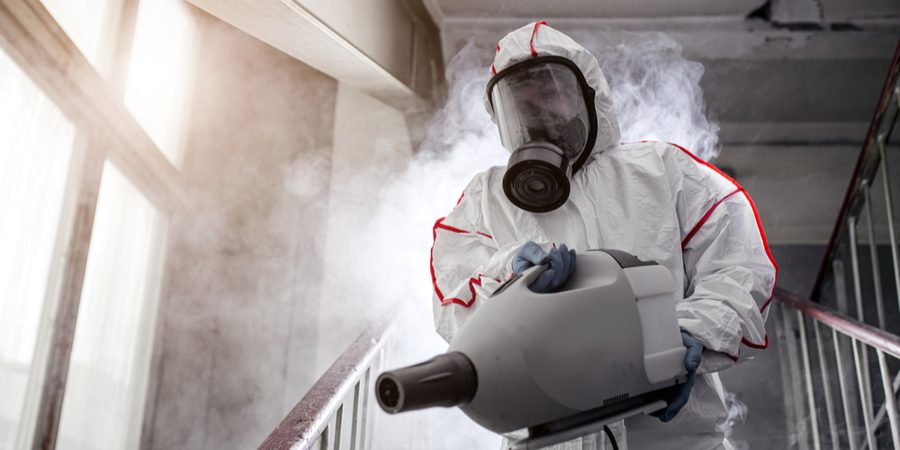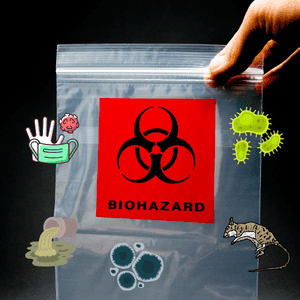Dealing with biohazards is not just a messy job—it’s a critical process that requires expert handling to prevent health risks and further contamination. Biohazard cleanup involves the safe removal, cleaning, and disinfection of areas affected by infectious materials, hazardous chemicals, and biological waste. Whether it’s a crime scene, sewage backup, or an unattended death, professional intervention is essential to ensure your home is fully restored and safe for habitation.
If you’re wondering what biohazard cleanup professionals actually do and why DIY cleanup isn’t a safe option, this guide will walk you through everything you need to know, from what are biohazards to the proper remediation steps taken by experts.
What Is Biohazard Cleanup? Understanding the Basics

Before diving into the cleanup process, it’s important to understand what are biohazards and why they require specialized treatment. Biohazards are biological substances that pose a significant threat to human health, including:
- Blood and bodily fluids containing harmful pathogens that can spread infectious diseases.
- Bacteria and viruses that survive on surfaces and in the air, posing a risk of transmission.
- Mold and fungal growth resulting from prolonged moisture exposure, which can cause respiratory issues.
- Hazardous chemicals and waste left behind from drug labs, industrial spills, or sewage backups.
- Sewage and human waste carrying harmful bacteria and contaminants that can cause serious illness.
Because biohazardous materials can linger in the environment and compromise air quality, professional cleanup teams follow local safety regulations to ensure proper containment and sanitation. Using advanced cleaning methods, they eliminate all hazardous elements to restore the affected area to a safe and habitable condition.
Common Biohazard Situations That Require Professional Cleanup
Not all property damage can be handled with a mop and bucket. Some situations involve dangerous contaminants that require the expertise of a remediation team. Here are the most common biohazard situations that call for professional intervention:

- Unattended death and decomposition: When a person passes away without immediate discovery, the body begins to decompose. This process releases harmful bacteria and strong odors that require thorough decontamination. Fluids can seep into flooring and walls, making proper biohazard cleanup essential to restore the property.
- Crime scene and trauma cleanup: Blood and bodily fluids contain infectious materials that pose serious health risks. Only trained professionals should handle crime scene cleanup to prevent cross-contamination and ensure all biohazardous waste is properly disposed of.
- Hoarding situations: Hoarding often leads to unsanitary conditions with biohazards such as mold, decomposing food, rodent droppings, and human waste. Cleanup requires a careful approach to remove hazardous debris and restore the home to livable conditions.
- Drug lab cleanup: Illicit drug production, such as meth labs, leaves behind toxic chemical residues that can be absorbed into walls, flooring, and HVAC systems. Remediation teams must use specialized chemicals and protective gear to remove contaminants safely.
- Sewage backups: Raw sewage is loaded with bacteria, viruses, and parasites that can cause serious illnesses. Professional hazardous waste disposal is necessary to prevent exposure to harmful pathogens and ensure complete disinfection of the affected area.
- Infectious disease outbreaks: Environments contaminated with airborne or surface pathogens require comprehensive disinfection to prevent the spread of diseases such as COVID-19, hepatitis, and norovirus.
Read more from our blog: Biohazard Examples, Levels, & What You Need to Know to Stay Safe
The Biohazard Cleanup Process: Step-by-Step Guide
A remediation team follows a structured process to ensure all hazardous waste is removed safely, minimizing exposure risks. Here’s what you can expect during a biohazard cleanup:
Initial Assessment & Risk Evaluation
- A professional team conducts an initial assessment to determine the extent of contamination.
- Risk factors are identified, including the presence of bloodborne pathogens, hazardous chemicals, or airborne contaminants.
- A tailored cleanup plan is developed, outlining the necessary procedures and safety measures.
Containment & Protection
- The contaminated area is sealed off using plastic sheeting and industrial-grade barriers to prevent the spread of biohazards.
- Experts wear Personal Protective Equipment (PPE), including gloves, respirators, protective suits, and goggles, to minimize exposure to dangerous materials.
Removal & Disposal of Biohazardous Materials
- All hazardous waste, including blood, bodily fluids, contaminated furniture, and porous materials, is carefully removed.
- Waste is placed in specialized biohazard containers and transported for proper hazardous waste disposal per OSHA and EPA regulations.
Deep Cleaning & Disinfection
- Industrial-grade disinfectants are applied to remove pathogens and eliminate harmful bacteria and viruses.
- High-touch surfaces such as doorknobs, light switches, and countertops are meticulously sanitized to prevent recontamination.
- Special enzyme-based cleaners are used to break down biological materials and neutralize dangerous residues.
Deodorization & Air Purification
- Advanced air filtration systems and ozone treatments help remove lingering odors from decomposition, chemicals, or sewage.
- HEPA air scrubbers restore safe air quality by trapping airborne contaminants and bacteria.
Final Inspection & Clearance
- A final inspection ensures the property is completely decontaminated and free from biohazards.
- Clearance testing may be conducted to confirm that all dangerous materials have been successfully removed.
Why Biohazard Cleanup Isn’t a DIY Job
Attempting to clean a contaminated area without proper training and equipment is both dangerous and legally complicated. Here’s why hiring biohazard cleanup professionals is essential:
- Exposure to infectious materials such as HIV, Hepatitis B, and other bloodborne pathogens can be life-threatening.
- Hazardous waste disposal regulations require specific handling and transport procedures to prevent environmental contamination.
- Household cleaning products are not strong enough to remove pathogens effectively.
- Improper cleaning can lead to cross-contamination and prolonged exposure risks.
- Professionals use specialized equipment and proven techniques to fully disinfect and restore affected areas.
How to Choose the Right Biohazard Cleanup Company
Not all cleanup companies are equal. If your property requires biohazard cleanup, here’s how to choose the best professionals for the job:
- Ensure they are IICRC-certified and comply with local safety regulations.
- Ask about their experience handling common biohazard situations.
- Confirm they provide 24/7 emergency response.
- Look for customer reviews and references to verify their credibility.
- Choose a company that handles insurance claims for a hassle-free process.
Restoring Safety & Peace of Mind: Get Professional Biohazard Cleanup Today
Handling a biohazard cleanup situation is not just about cleaning—it’s about restoring safety, security, and peace of mind. Blackhill Restoration specializes in biohazard remediation, hazardous waste disposal, and professional cleaning, ensuring that your home or business is safe and habitable once again.
Don’t take risks with infectious materials or improper cleanup methods. Contact Blackhill Restoration today for expert biohazard cleanup services in Central Texas. Our trained specialists are available 24/7 to provide fast, reliable, and compassionate service when you need it most.
Call Now for Immediate Assistance
24/7 Emergency Response:
512-222-5697

